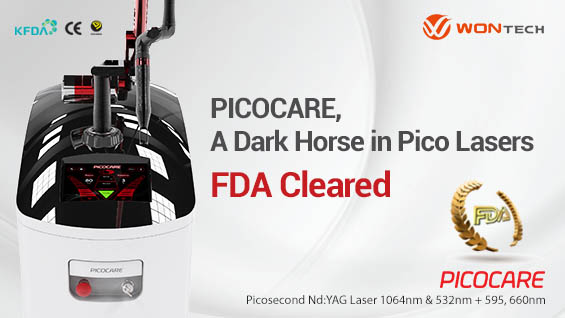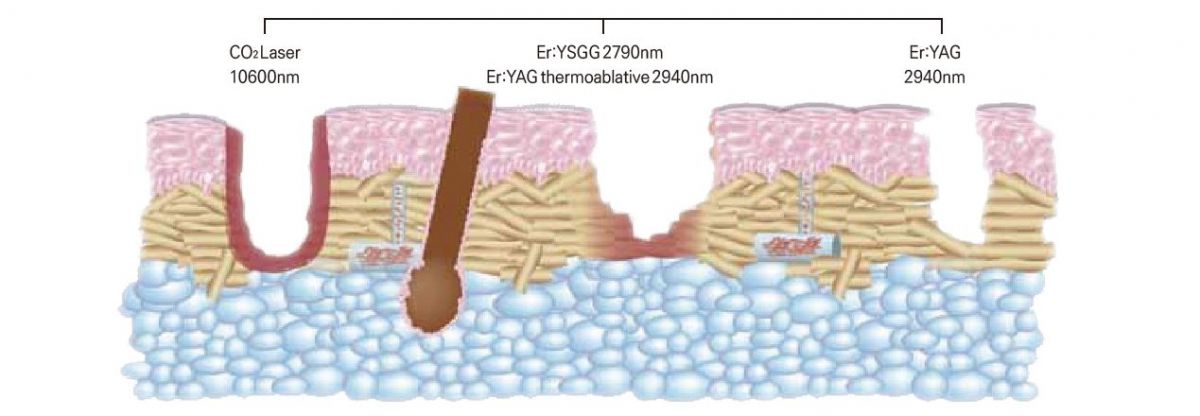
▶ Previous Artlcle: #11-5. Ablative Fractional Laser
2790nm YSGG Fractional Laser
Because the 2790nm YSGG fractional laser has the absorption rate to the water (5000), lower than the 2940nm (12500) and higher than the 10600nm (1000), it can further enhance the skin regeneration effect by forming smaller coagulation zones than Er:YAG fractional laser does (Picture 5).
The YSGG fractional laser, which is also used to the treatment for scars, pores, fine wrinkles, skin texture, and pigment lesions, is less disruptive to ordinary daily activities in that it has the advantage of taking a shorter time to recover after the procedure.
In terms of the post-operative care, the same principles are applied as said CO2 fractional laser and Er:YAG fractional laser.
[Advertisement] PICOCARE - Manufacturer: WONTECH(www.wtlaser.com)]
1Although it was clinically applied later than monablative fractional laser, the ablative fractional laser vaporizes tissues and coagulates some of them, resulting in the tissue contraction, which is more effective in treating scars and pores, contributing to establishing its own therapeutic specialty.
In order to address its relatively long recovery time after treatment compared to nonablative fractional laser and expand its therapeutic areas, the ablative fractional laser has adjusted fluence, frequency, and pulse duration, accordingly.
As a result, it can also be used to improve skin whitening and skin texture through superficial peels such as lunchtime peels.
Benign tumors, such as xanthoma and sebaceous hyperplasia, are treated by applying repeated procedures with ablative fractional lasers similar to the pin-hole technique, which is effective in reducing recovery time after treatment.
Regardless of the type of ablative fractional lasers, one single equipment can be of a great help to medical practitioners as it is remarkably versatile with proper adjustment of parameters according to purposes.
Picture 6. Effects of the ablative fractional laser on skin.
-To be continued





















